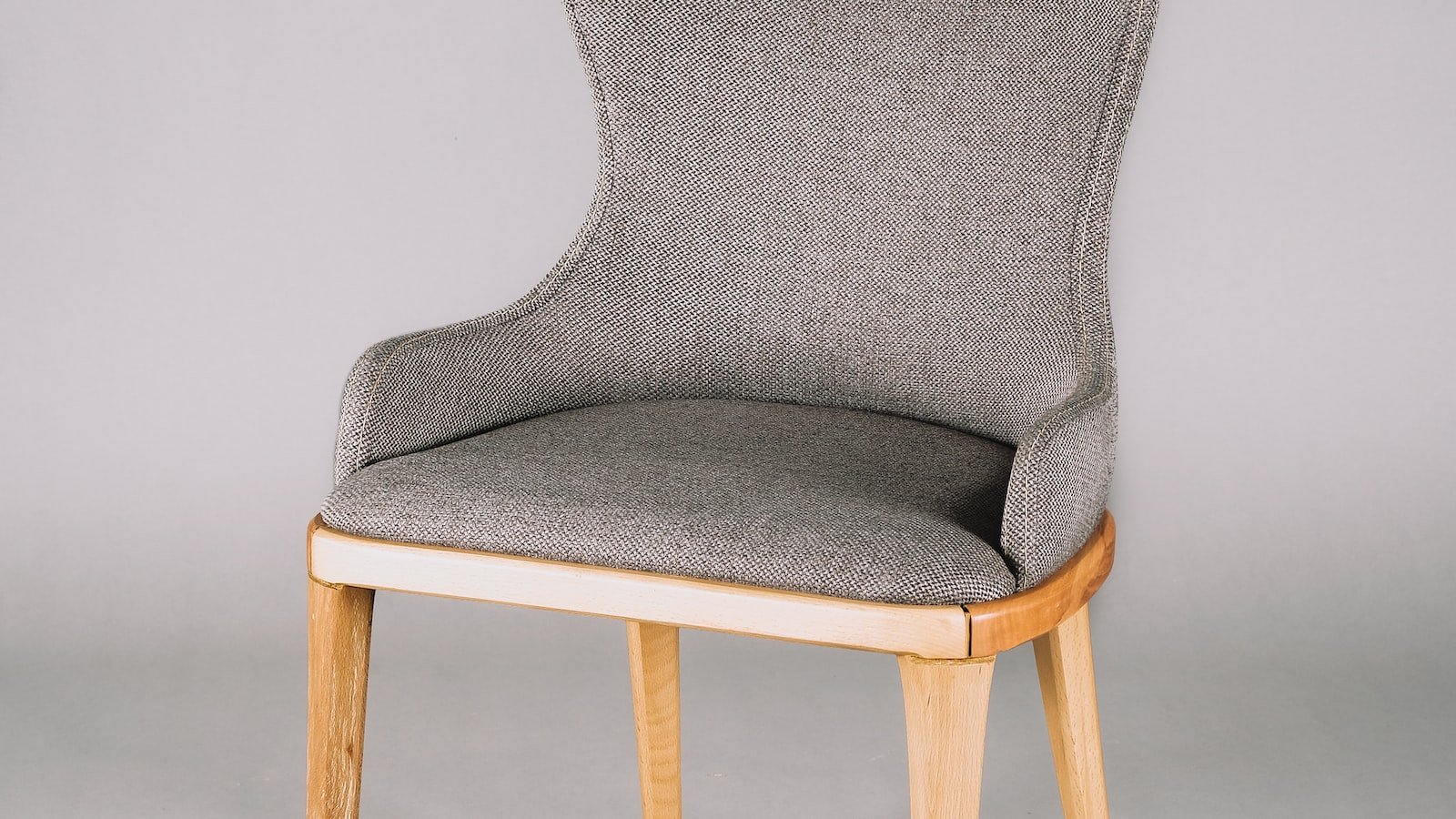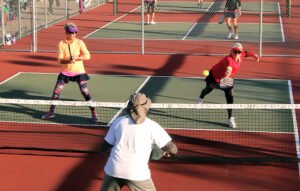With paddles in hand, standing on a vibrant court, and a lively crowd cheering in the background, pickleball players engage in a game that combines elements of tennis, badminton, and ping pong. This addictive sport is gaining popularity worldwide, attracting players of all ages and skill levels. Whether you are a novice just discovering the joys of pickleball or a seasoned player looking to enhance your performance, incorporating the right exercises into your training routine is essential. In this article, we will explore six fundamental exercises that every pickleball player needs to master in order to enhance their agility, power, and overall gameplay. So, let’s grab our paddles and delve into the world of pickleball fitness!
Table of Contents
- Introduction: The importance of exercise for pickleball players
- 1. Warm-up exercises: Preparing your body for the game
- 2. Strength and conditioning exercises: Building power and endurance
- 3. Agility drills: Enhancing quick movements and reaction time
- 4. Core stability exercises: Improving balance and coordination
- 5. Flexibility training: Enhancing range of motion and preventing injuries
- Q&A
- Wrapping Up

Introduction: The importance of exercise for pickleball players
Playing pickleball is not just a fun and exciting way to spend your free time; it is also an excellent form of exercise. As a pickleball player, the physical demands of the sport can significantly impact your performance on the court. That is why incorporating regular exercise into your routine is crucial for both enhancing your skills and preventing injuries.
Exercise provides numerous benefits to pickleball players, including increased strength, agility, and cardiovascular endurance. By engaging in targeted workouts, you can improve your power and control during the game, allowing you to make those winning shots with ease. Moreover, exercising regularly helps in building endurance, enabling you to sustain your energy levels throughout long matches or intense rallies.
- Enhances cardiovascular health
- Increases muscular strength and endurance
- Improves agility, balance, and coordination
- Reduces the risk of injuries
- Boosts mental focus and concentration

1. Warm-up exercises: Preparing your body for the game
Before diving into an intense game, it’s crucial to properly warm up your body to prevent injuries and maximize performance. Here are some invigorating warm-up exercises that will get your blood pumping and muscles ready for action:
- Jogging: Start with a gentle jog to gradually increase your heart rate and warm up major muscle groups.
- Dynamic stretching: Engage in a series of dynamic stretches that involve moving parts of your body through a full range of motion. This helps improve flexibility and mobility. Try leg swings, arm circles, and hip rotations.
- Jumping jacks: Get your whole body involved with jumping jacks. This exercise increases circulation, elevates your heart rate, and activates your leg, arm, and core muscles.
- High knees: Lift your knees as high as possible while jogging in place. This exercise helps improve lower body strength, flexibility, and coordination.
- Skipping: Embrace your inner child and skip around for a few minutes. Skipping enhances coordination, engages your core, and warms up your whole body.
Remember, warming up is not only essential for physical readiness, but it also prepares your mind for the game ahead. Take the time to go through these exercises and feel the difference in your performance and overall enjoyment of the game!
2. Strength and conditioning exercises: Building power and endurance
When it comes to building power and endurance, strength and conditioning exercises are essential. These exercises not only help you to become stronger but also improve your overall fitness and stamina. Whether you are an athlete, a fitness enthusiast, or simply looking to increase your physical capabilities, incorporating strength and conditioning exercises into your routine can have numerous benefits.
One of the most effective ways to build power and endurance is by incorporating weightlifting into your workouts. This involves lifting weights to improve muscle strength and increase power. Some popular weightlifting exercises include squats, deadlifts, bench press, and military press. Remember to start with lighter weights and gradually increase the resistance as you progress to avoid injury.
In addition to weightlifting, cardiovascular exercises can also play a crucial role in building endurance. These exercises increase your heart rate, improve lung capacity, and help you to sustain physical activity for longer periods. Running, cycling, swimming, and rowing are excellent cardiovascular exercises that can be incorporated into your routine. Try to aim for at least 150 minutes of moderate-intensity cardiovascular exercises per week to see significant improvements in your endurance levels.
- Include weightlifting exercises such as squats, deadlifts, bench press, and military press to build power.
- Gradually increase the weight as you progress to avoid injury.
- Incorporate cardiovascular exercises like running, cycling, swimming, and rowing to improve endurance.
- Aim for at least 150 minutes of moderate-intensity cardiovascular exercises per week.
By incorporating a combination of weightlifting and cardiovascular exercises into your routine, you can effectively build power and endurance. Don’t forget to stay consistent and listen to your body’s needs. Over time, you’ll notice significant improvements in your overall fitness and physical performance.
3. Agility drills: Enhancing quick movements and reaction time
Agility drills are a crucial component of any athletic training regimen, as they focus on enhancing quick movements and improving reaction time. These drills are designed to challenge your body’s agility, coordination, and balance, enabling you to move more efficiently and effectively on the field, court, or track.
There are various agility drills that can be incorporated into your training routine to take your athletic performance to the next level. Here are a few examples:
- Ladder Drills: Ladder drills involve placing a ladder on the ground and performing quick footwork exercises by stepping in and out of each ladder rung. This helps improve foot speed, agility, and coordination.
- Shuttle Runs: Shuttle runs involve running back and forth between two points within a designated distance, focusing on quick changes of direction. This drill not only enhances agility but also aids in developing acceleration and deceleration skills.
- Cone Drills: Cone drills involve setting up cones in various patterns and maneuvering around them quickly, mimicking real-life scenarios where you need to change direction rapidly. These drills improve agility, reaction time, and body control.
By incorporating agility drills into your training routine on a regular basis, you can significantly enhance your quick movements and reaction time, giving you a competitive edge in your chosen sport or activity. Remember to always warm up before starting any agility drills and gradually increase the intensity as you progress. Stay committed, challenge yourself, and enjoy the rewards of improved agility!
4. Core stability exercises: Improving balance and coordination
Core stability exercises are a crucial aspect of any fitness routine, as they not only improve balance and coordination but also help to prevent injuries. Incorporating these exercises into your workout regimen will enhance your overall body strength and stability, allowing you to perform daily activities with ease and grace.
One effective exercise to enhance core stability is the plank. To perform this exercise, start by lying face down on the floor. Get into a push-up position, with your forearms resting on the ground and your elbows aligned with your shoulders. Engage your core and lift your body off the ground, balancing on your forearms and toes. Keep your body in a straight line from head to toe, and hold this position for as long as you can. As you progress, challenge yourself by increasing the duration of the plank or incorporating variations such as side planks or walking planks.
Another great exercise for improving balance and coordination is the single-leg deadlift. This exercise targets multiple muscle groups, including the core, glutes, and hamstrings. Begin by standing straight with your feet hip-width apart and your arms by your sides. Shift your weight onto one leg and slowly hinge forward at the hips, while simultaneously extending your other leg behind you. Keep your back straight and your core engaged throughout the movement. Return to the starting position and repeat on the other leg. For added difficulty, hold a dumbbell or kettlebell in one hand while performing the exercise.
Incorporating these core stability exercises into your fitness routine will undoubtedly enhance your balance and coordination. Over time, you will notice improved stability, better posture, and increased control over your movements. Remember to always listen to your body and start with exercises that suit your fitness level. So go ahead, challenge yourself, and unlock the benefits of a strong and stable core!
5. Flexibility training: Enhancing range of motion and preventing injuries
Flexibility training is an essential component in any fitness routine, offering numerous benefits that go beyond just improving your range of motion. By incorporating a variety of stretching exercises into your workouts, you can enhance your flexibility, decrease muscle tightness, and reduce the risk of injuries.
One major advantage of flexibility training is increased joint mobility. Through regular stretching, you can improve the elasticity of your muscles and tendons, allowing them to move more freely. This increased range of motion not only improves your athletic performance but also makes your daily activities easier and more comfortable.
Moreover, flexibility training plays a crucial role in injury prevention. Stretching helps alleviate muscle imbalances by promoting muscular symmetry, reducing the risk of strains and sprains. By maintaining well-stretched muscles, you will reduce excess tension on your joints and decrease the likelihood of overuse injuries. When combined with proper warm-up exercises, flexibility training prepares your body for physical activity, improving overall athletic performance and reducing the chance of accidents.
So, whether you are an athlete looking to improve your competitive edge or simply aiming to maintain a healthy, active lifestyle, incorporating flexibility training into your fitness routine is a wise choice. Remember, flexibility is key to enhancing your range of motion and preventing injuries.
Q&A
Q: What are the six essential exercises every pickleball player needs?
A: The six essential exercises for pickleball players are agility ladder drills, lunges, shoulder strengthening exercises, core exercises, plyometric exercises, and stretching.
Q: Why are agility ladder drills important for pickleball players?
A: Agility ladder drills help improve footwork, speed, and coordination on the pickleball court, enabling players to move quickly and efficiently to reach the ball.
Q: How do lunges benefit pickleball players?
A: Lunges strengthen the leg muscles, particularly the quadriceps and glutes, which are crucial for bending, twisting, and lunging movements required during pickleball matches.
Q: Why is shoulder strengthening important for pickleball players?
A: Shoulder strengthening exercises help prevent injuries and improve stability, as pickleball involves repetitive overhead swings and shots that can strain the shoulder muscles.
Q: What role do core exercises play in pickleball?
A: Core exercises, such as planks and Russian twists, help improve balance, stability, and power in the midsection, enabling pickleball players to generate more power in their shots and maintain better control on the court.
Q: How do plyometric exercises benefit pickleball players?
A: Plyometric exercises, like box jumps and lateral hops, improve explosive power, quickness, and agility, which are essential for pickleball players to react swiftly to the ball and perform explosive movements on the court.
Q: Why is stretching important for pickleball players?
A: Stretching before and after playing pickleball helps improve flexibility and range of motion, reducing the risk of muscle strains and enhancing recovery after intense matches.
Wrapping Up
As the sun begins to set on our exploration of the six essential exercises every pickleball player needs, we hope you’ve discovered the secrets to mastering this fast-paced and exhilarating game. From the rhythmic drills that sharpen your precision to the power-packed movements that ignite your strength, pickleball enthusiasts understand that true mastery lies in a well-rounded fitness routine.
So, whether you’re a seasoned pro or just dipping your toes into this addictive sport, we implore you to don your athletic gear, lace up your shoes, and embark on a journey of physical and mental greatness. As you incorporate these six vital exercises into your training regimen, prepare yourself for the exhilarating feeling of effortlessly navigating the pickleball court.
Remember, each exercise serves a distinct purpose, honing your body’s abilities in various facets of the game. Whether you’re looking to enhance your agility, increase your power, or improve your balance and coordination, these essential exercises will become the building blocks of your pickleball prowess.
Imagine the satisfaction of acing the most challenging shots effortlessly, of gliding across the court with the grace of a dancer, and of outwitting your opponents with every tactical move. These exercises are your pathway to achieving these feats.
As you venture forth, keep in mind that greatness takes time. Patience and persistence will be your allies, molding your body and mind into a pickleball player’s perfection. Embrace the process, celebrate the small victories, and allow yourself the occasional stumble, for it is through these challenges that true growth arises.
Above all, remember that pickleball is not solely about fitness or competition. It’s about forming connections, building friendships, and sharing moments of joy and laughter. Cherish the camaraderie that thrives within this vibrant community, and let the spirit of the game carry you through each exhilarating match.
Now, dear reader, it’s time to embark on this extraordinary journey. Channel your inner athlete, embrace the demands of these essential exercises, and may your love for pickleball soar to greater heights than ever imagined. So go forth, and may the sound of the paddle meeting the ball become music to your ears as you step into the thrilling world of pickleball excellence.
As an affiliate, my content may feature links to products I personally use and recommend. By taking action, like subscribing or making a purchase, you’ll be supporting my work and fueling my taco cravings at the same time. Win-win, right?
Want to read more? Check out our Affiliate Disclosure page.




